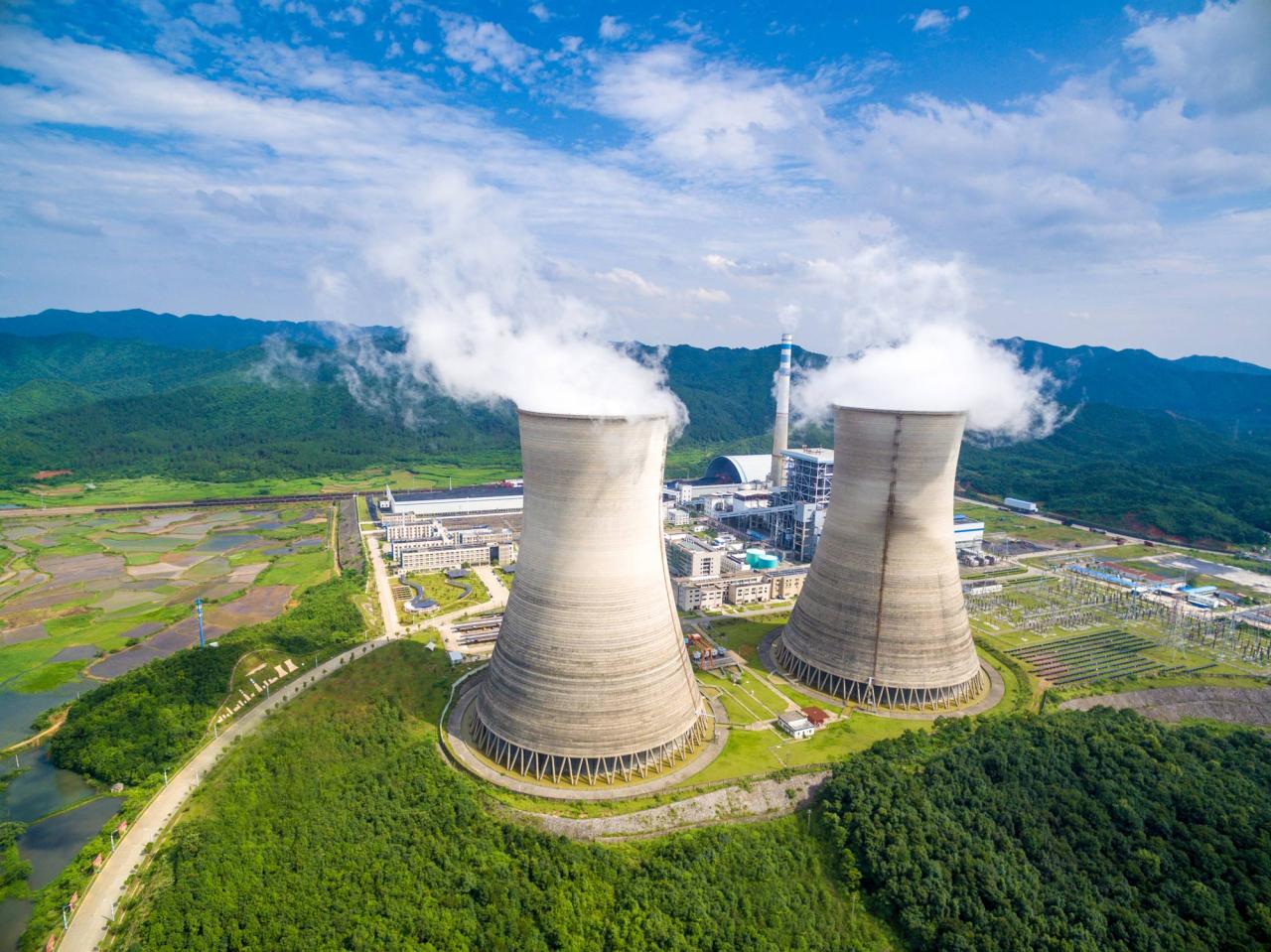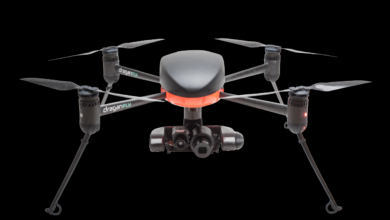
Australia Joins the Industrial Arms Race
Australia joins the industrial arms race – a bold statement, right? But it’s a reality shaping the nation’s future. We’re talking about a massive shift, a strategic pivot towards bolstering domestic manufacturing and technological prowess. This isn’t just about building more things; it’s about securing Australia’s place in a rapidly changing global landscape, a move driven by geopolitical shifts, economic ambition, and a desire to control its own technological destiny.
This post dives deep into what this means for Australia’s economy, its workforce, and its place on the world stage.
The implications are far-reaching, touching everything from the jobs we create to the environmental impact of increased industrial activity. We’ll explore the specific technological areas Australia is focusing on, the potential challenges and opportunities, and the crucial role of international collaboration. Get ready for a fascinating look at Australia’s ambitious new direction.
Specific Technological Areas of Focus

Australia’s entry into a heightened industrial arms race necessitates strategic investment in specific technological areas to ensure national security and economic competitiveness. This will require a multi-pronged approach, focusing on technologies with both immediate and long-term strategic implications. Prioritizing research and development, fostering collaboration between academia, industry, and government, and attracting and retaining skilled talent will be crucial for success.The following sections detail potential areas of focus, drawing parallels with successful programs in other nations and outlining a potential roadmap for Australian technological development.
Cybersecurity Enhancements
Australia’s robust digital infrastructure makes it a prime target for cyberattacks. Investment in cybersecurity needs to be significantly increased, focusing on both defensive and offensive capabilities. This includes developing advanced threat detection systems, improving critical infrastructure protection, and enhancing national cybersecurity workforce training. Israel, with its highly developed cybersecurity sector, serves as a model, showcasing the potential for a nation to leverage its technological expertise to create a lucrative and strategically important industry.
A potential roadmap involves establishing national cybersecurity standards, investing in research and development of next-generation security technologies (e.g., AI-driven threat detection), and fostering public-private partnerships to share threat intelligence and best practices.
- Key Challenges: Attracting and retaining skilled cybersecurity professionals, managing the increasing complexity of cyber threats, balancing national security needs with privacy concerns.
- Key Opportunities: Developing a world-leading cybersecurity industry, attracting foreign investment, strengthening national resilience against cyberattacks.
Artificial Intelligence Advancement
AI is rapidly transforming numerous sectors, from defense to healthcare. Australia should focus on developing its AI capabilities in areas relevant to national security, such as autonomous systems, data analytics for intelligence gathering, and AI-powered decision support systems. The success of the UK’s AI sector, fueled by government investment and a vibrant academic community, provides a valuable case study.
Australia’s push to become a major player in advanced manufacturing feels a bit like a modern-day arms race, doesn’t it? It makes me wonder about the societal implications – how will this impact things like resource allocation and public safety? For instance, I’ve been reading up on the complexities of policing, particularly what is two tier policing , and how that system might need to adapt to the potential shifts in social dynamics brought on by this industrial surge.
Ultimately, Australia’s industrial ambitions will reshape many aspects of life, requiring careful consideration of their consequences.
A potential roadmap includes establishing national AI research centers, supporting the development of AI-related startups, and promoting ethical guidelines for AI development and deployment.
Australia’s jump into the industrial arms race is fascinating, especially considering the global political climate. It makes you wonder about the international power plays at work, and I found myself asking, while reading about this, why on earth would anyone go to a British party conference, as discussed in this insightful article: why on earth would anyone go to a british party conference.
Perhaps these seemingly disparate events are more connected than we think, both reflecting a shift in global alliances and priorities within the current arms race.
- Key Challenges: Addressing ethical concerns surrounding AI, ensuring data privacy and security, bridging the skills gap in AI expertise.
- Key Opportunities: Developing cutting-edge AI technologies, creating high-value jobs, enhancing national competitiveness in the global AI market.
Renewable Energy Technologies
Investing in renewable energy technologies is not only crucial for environmental sustainability but also for energy security and independence. Australia, with its abundant solar and wind resources, is well-positioned to become a leader in this field. Germany’s Energiewende (energy transition) program, despite its challenges, provides valuable lessons in transitioning to a renewable energy-based economy. A potential roadmap includes investing in research and development of next-generation renewable energy technologies (e.g., advanced solar cells, energy storage solutions), developing smart grids to integrate renewable energy sources, and supporting the growth of renewable energy industries.
- Key Challenges: Managing the intermittency of renewable energy sources, developing cost-effective energy storage solutions, addressing the environmental impact of renewable energy technologies.
- Key Opportunities: Creating a new generation of green jobs, reducing carbon emissions, enhancing energy security and independence.
Advanced Manufacturing Capabilities
Advanced manufacturing, encompassing robotics, automation, and additive manufacturing (3D printing), is crucial for enhancing national industrial capacity and competitiveness. Countries like South Korea have successfully integrated advanced manufacturing technologies into their industrial base, achieving high levels of productivity and efficiency. A potential roadmap involves investing in research and development of advanced manufacturing technologies, supporting the adoption of these technologies by Australian businesses, and developing a skilled workforce capable of operating and maintaining advanced manufacturing systems.
- Key Challenges: Attracting and retaining skilled manufacturing workers, adapting to rapid technological advancements, fostering collaboration between industry and academia.
- Key Opportunities: Increasing productivity and efficiency in Australian industries, creating high-value jobs, enhancing national competitiveness in global markets.
Impact on Employment and Workforce Development

Australia’s ambitious entry into the industrial arms race will undoubtedly reshape the nation’s employment landscape, creating both challenges and opportunities. The shift towards advanced manufacturing and technological innovation will necessitate a significant workforce transformation, demanding a proactive and strategic approach to upskilling and reskilling the existing workforce and attracting new talent. This transition, while potentially disruptive in the short term, offers the potential for long-term economic prosperity and a more technologically advanced and competitive Australian economy.The projected expansion in high-tech manufacturing, renewable energy, and advanced materials sectors will lead to a surge in demand for specialized roles.
These include engineers, technicians, data scientists, researchers, and skilled tradespeople. Conversely, some traditional manufacturing roles may decline as automation and AI become more prevalent. This necessitates a proactive approach to managing the transition, ensuring that displaced workers are supported in acquiring new skills and finding employment in emerging sectors. Furthermore, attracting and retaining skilled international talent will be crucial to achieving the ambitious goals of this industrial expansion.
Workforce Development Initiatives
Addressing the workforce needs of this industrial expansion requires a multi-pronged approach focusing on education, training, and apprenticeship programs. The government, in collaboration with industry, needs to invest heavily in STEM (Science, Technology, Engineering, and Mathematics) education at all levels, from primary school to tertiary education. Furthermore, strong emphasis should be placed on vocational training and apprenticeships, providing pathways for individuals to acquire practical skills in high-demand areas.
These initiatives should be tailored to address the specific skill gaps identified in the targeted industrial sectors. For example, specialized training programs in robotics, AI, and advanced materials processing will be essential. Successful implementation requires close collaboration between educational institutions, industry partners, and government agencies to ensure that training programs are relevant, accessible, and aligned with industry needs.
Examples of Successful Workforce Training Programs
Australia has a history of successful workforce training programs. For example, the Australian Industry Group’s (Ai Group) training initiatives have provided crucial upskilling opportunities for workers in various manufacturing sectors. These programs often incorporate on-the-job training, apprenticeships, and industry certifications, ensuring that trainees acquire the practical skills required by employers. Similarly, TAFE (Technical and Further Education) institutions across the country offer a wide range of vocational training courses, many of which are tailored to meet the specific needs of emerging industries.
Australia’s push into advanced manufacturing, spurred by geopolitical anxieties, highlights a global trend. This intensified competition begs the question: will such escalating tensions ultimately force a shift in priorities, even for groups like Hamas? The article, will Hamas turn from war to politics , explores this very issue. Ultimately, Australia’s involvement in the arms race is inextricably linked to the broader instability shaping global politics.
These programs often involve partnerships with industry, providing access to state-of-the-art equipment and industry experts. Furthermore, government-funded initiatives such as the Skills for the Future Fund have played a significant role in providing financial support for individuals seeking to upskill or reskill. The success of these programs demonstrates the importance of collaboration between government, industry, and educational institutions in developing a skilled workforce.
Projected Job Growth in Key Sectors
The following table provides a projected overview of job growth in key sectors anticipated to benefit most from the industrial expansion. These projections are based on industry analyses and government forecasts, taking into account technological advancements and anticipated investment. It’s crucial to remember that these are estimates and actual figures may vary.
| Sector | Projected Job Growth (Next 5 Years) | Required Skills |
|---|---|---|
| Advanced Manufacturing | +30,000 | Robotics, automation, data analytics, engineering, skilled trades |
| Renewable Energy | +25,000 | Engineering (electrical, mechanical), renewable energy technologies, project management |
| Information and Communication Technology (ICT) | +20,000 | Software development, data science, cybersecurity, network engineering |
| Advanced Materials | +15,000 | Materials science, nanotechnology, chemical engineering |
Environmental Considerations: Australia Joins The Industrial Arms Race
Australia’s ambitious entry into the industrial arms race necessitates a concurrent and unwavering commitment to environmental sustainability. The potential environmental impact of this expansion is significant, encompassing increased greenhouse gas emissions, resource depletion, and potential pollution of land and water resources. However, proactive mitigation strategies and the adoption of sustainable practices can significantly lessen these negative consequences.The expansion of industrial activity will inevitably lead to increased energy consumption and greenhouse gas emissions, primarily carbon dioxide.
This contributes to climate change, impacting Australia’s unique ecosystems and exacerbating existing environmental challenges like drought and bushfires. Furthermore, the extraction of raw materials for industrial processes will place a strain on natural resources, potentially leading to habitat loss and biodiversity reduction. Industrial wastewater and air emissions also pose risks to water quality and air purity, impacting human health and the environment.
Mitigation Strategies for Negative Environmental Consequences
Effective mitigation requires a multi-pronged approach. This includes investing heavily in renewable energy sources like solar and wind power to reduce reliance on fossil fuels. Implementing stringent environmental regulations and enforcement mechanisms is crucial to control pollution and waste generation. Promoting energy efficiency measures across all industrial sectors can substantially reduce energy consumption and associated emissions. Furthermore, embracing circular economy principles, focusing on waste reduction, reuse, and recycling, minimizes resource depletion and waste disposal challenges.
Finally, robust environmental impact assessments should be mandatory for all new industrial projects to proactively identify and mitigate potential risks.
Sustainable Industrial Practices in Australia, Australia joins the industrial arms race
Australia is uniquely positioned to pioneer sustainable industrial practices. The country’s abundant renewable energy resources can power a green industrial revolution. Implementing advanced water treatment technologies can minimize water pollution from industrial processes. Adopting precision agriculture techniques can reduce the environmental footprint of food production, a crucial sector intertwined with industrial growth. Furthermore, investing in research and development of sustainable materials and technologies can create a more environmentally responsible industrial landscape.
The concept of “eco-industrial parks,” where businesses collaborate to share resources and minimize waste, offers a promising model for sustainable industrial development.
Example of a Sustainable Industrial Facility in Australia
Imagine a large-scale solar farm integrated with a state-of-the-art manufacturing facility in the Australian outback. The facility utilizes solar power exclusively, eliminating reliance on fossil fuels. Water is sourced from treated wastewater, minimizing pressure on freshwater resources. The facility employs closed-loop systems for manufacturing processes, minimizing waste and maximizing resource efficiency. All waste materials are either recycled or repurposed, aligning with circular economy principles.
The facility actively monitors its environmental impact, utilizing advanced sensor technologies and data analytics to optimize its operations and continuously reduce its environmental footprint. Green spaces are integrated into the facility’s design, providing habitats for local flora and fauna and creating a pleasant working environment. This facility serves as a model for sustainable industrial development, demonstrating the feasibility of environmentally responsible industrial expansion in Australia.
International Collaboration and Partnerships

Australia’s ambition to become a major player in the industrial arms race necessitates strategic international collaborations. Successfully navigating this complex landscape requires careful consideration of potential partners, the inherent benefits and challenges, and the implementation of effective partnership strategies. The ultimate impact on Australia’s industrial goals will be significantly shaped by the nature and success of these international alliances.International collaboration offers several crucial advantages, including access to advanced technologies, shared research and development costs, and the pooling of expertise.
However, challenges exist, such as intellectual property protection concerns, differing regulatory frameworks, and the potential for political complexities. Therefore, a well-defined strategy is vital to maximize benefits and mitigate risks.
Potential International Partners
Australia should prioritize partnerships with nations possessing advanced capabilities in areas relevant to its industrial goals. This includes countries with strong track records in defence technology, advanced manufacturing, artificial intelligence, and renewable energy. Potential partners could include the United States, the United Kingdom, Canada, Israel, and possibly even certain nations in the Asia-Pacific region, depending on specific technological needs and political considerations.
The selection process should be driven by a clear assessment of each potential partner’s capabilities, alignment with Australian strategic objectives, and the overall feasibility of collaboration.
Benefits and Challenges of International Collaboration
The benefits of international collaboration are multifaceted. Joint research and development efforts can significantly reduce costs and accelerate technological advancements. Access to specialized expertise and facilities located in partner countries can overcome limitations in Australia’s domestic capacity. Moreover, strategic partnerships can foster technology transfer, enabling Australia to acquire and adapt cutting-edge technologies for its own industrial base. However, challenges are equally significant.
Intellectual property rights must be carefully negotiated and protected to prevent the exploitation of Australian innovations. Differing regulatory frameworks and bureaucratic processes can create significant hurdles in joint projects. Political sensitivities and geopolitical considerations also play a crucial role, requiring careful diplomatic management. Successful collaboration demands a high degree of trust and mutual understanding between partners.
Strategies for Fostering Effective International Partnerships
Effective international partnerships require a structured and proactive approach. This begins with a clear articulation of Australia’s technological needs and objectives. Transparency and open communication are vital throughout the partnership lifecycle, from initial negotiations to project implementation and evaluation. Robust legal frameworks and intellectual property agreements are crucial to protect the interests of all parties involved. Establishing joint research centers or consortia can facilitate collaboration and knowledge sharing.
Regular review mechanisms should be in place to monitor progress, address challenges, and adapt strategies as needed. Finally, cultivating strong diplomatic ties and fostering personal relationships between researchers and industry professionals can contribute to a more successful and enduring partnership.
Impact of Different International Partnerships
The success of Australia’s industrial goals will be directly impacted by the nature of its international partnerships. Partnerships with countries like the United States or the United Kingdom, for example, could provide access to advanced defence technologies and expertise, strengthening Australia’s national security capabilities. Collaborations with nations specializing in renewable energy technologies could accelerate the transition to a cleaner and more sustainable industrial sector.
However, the choice of partners also carries geopolitical implications. Partnerships with certain nations could potentially strain relationships with others, requiring careful balancing of strategic interests. The ultimate impact will depend on the careful selection of partners, the effective management of partnerships, and the ability to adapt strategies in response to evolving global dynamics.
Australia’s journey into the industrial arms race is a complex one, fraught with both immense potential and significant challenges. Successfully navigating this path will require strategic investment, skilled workforce development, and a commitment to sustainable practices. The decisions made today will shape Australia’s economic and geopolitical standing for decades to come. While risks exist, the potential rewards – a more resilient, technologically advanced, and economically prosperous Australia – are undeniably compelling.
The race is on, and Australia is determined to compete.




